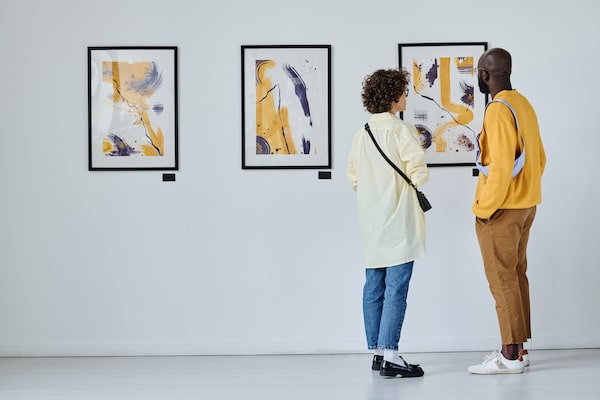
MAB100 provides enough information that investors could invest in multiple artworks at the same time.AnnaStills/AFP/Getty Images
Sign up for the Globe Advisor weekly newsletter for professional financial advisors on our sign-up page. Get exclusive investment industry news and insights, the week’s top headlines, and what you and your clients need to know. For more from Globe Advisor, visit our homepage.
Collecting art has long been a foray of the wealthy, but a new index hopes to bring the joys of passion investing to the masses.
Last month, online art brokerage MyArtBroker launched MAB100, an index of the top 100 print editions. The goal of MAB100 is to provide more analytical data for art, so investors can determine whether there’s an investment opportunity, says Charlotte Stewart, managing director of MyArtBroker in London.
MAB100 uses algorithms that feature multiple data points that affect pricing. These include unsold rates along with public and private sales, the overall market share of an individual print and artist, last bids on unsold works and artist trends. These cumulative spend metrics will be calculated every quarter, Ms. Stewart says.
“Normally, when you’re looking at art, the public auction data are all that’s available to you,” she says. “That’s a small part of the overall picture as most sell art privately.”
Ms. Stewart says an investor can click on any of the 100 artworks on their website and view the increase or decrease in value using more than 40 historical data points.
“With those [data], you get a proxy for liquidity,” she says. “You’ll see the amount of demand and supply in the marketplace, coupled with the growth of the prints’ value in the past 20 or 30 years, depending on which filter you are applying.”
She adds that MAB100 provides enough information so investors can invest in multiple artworks at the same time.
“That way, you can make strategic decisions about what to buy and sell over 10, 15 or 20 years, depending on what the art market is doing,” she says.
‘Providing more access to invest’
Andrew Feindel, portfolio manager with Richie Feindel Wealth Management at Richardson Wealth Ltd. in Toronto, says the fact the index is based on prints, which are limited copies of an artist’s work instead of an original, also democratizes art as an investment. Doing so could make art an appealing investment for price-sensitive investors and those who never considered art as an investment in the first place, he adds.
“This is a trend we’ve been seeing with all alternatives like private equity and private real estate … providing more access to invest,” he says.
“This is a good thing and art deserves a spot in people’s portfolios. Not everyone is going to be willing to spend $100,000 on a piece of art and hold it somewhere. And portfolio managers always look for something that shows a very good track record long term.”
He also appreciates that more data and track records will be available through the index.
“If people can start tracking, it gathers more interest in art,” he says. “If they start trading it, it basically leads to more buys and sells, and more activity.”
He would have liked to see Canadian artists featured in MAB100. Currently, there are none.
Owning a print version versus an original
An-Lap Vo-Dignard, senior wealth manager and portfolio manager with Vo-Dignard Provost Wealth Management Group at National Bank Financial Wealth Management in Montreal, agrees the index could be interesting for mass investors who would like to participate in investing in art. But he says most of his wealthy clientele who invest in art prefer to have a physical collective such as a treasured painting displayed in a home office or dining room wall. He notes that investing in an index means you don’t get to enjoy the physical asset – something often paramount with passion-based investments.
Because the index is print-based, Mr. Vo-Dignard says the upside will be capped. He notes this differs from an investor hoping to find an emerging artist whose original work becomes more valuable with demand over time.
“Prints will always be limited in value compared to originals,” he notes. “There can also be more possibilities for exit strategies when you actually own the [original] painting such as sharing its beauty with the community by donating to a museum where you don’t pay capital gains and get a tax receipt.”
Ms. Stewart says while some investors only want to buy art for the sheer love of it, they wouldn’t necessarily understand its investment potential. She hopes MAB100 helps with that.
“It’s a worldwide issue with the art market … you need something to be able to evaluate its performance over a period of time,” she says.
For more from Globe Advisor, visit our homepage.